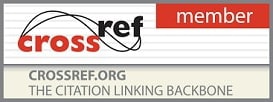Contact: +91-9711224068

FAUNA
- Printed Journal
- Indexed Journal
- Refereed Journal
- Peer Reviewed Journal
Impact Factor (RJIF): 5.69
e-ISSN : 2347-2677, p-ISSN : 2394-0522

International Journal of Fauna and Biological Studies
2025, Vol. 12 Issue 2, Part A
Mortality in periparturient merino ewes due to Haemonchosis during winter
Mubashir Ali Rather, Khalid Bashir, Javaid Ahmad Baba and Ajaz Ahmad Baba
A sudden and alarming mortality affected peri-parturient Merino ewes, during late winter resulting in nine deaths within a flock of 120. Post-mortem examination of three carcasses revealed severe emaciation, pale mucous membranes, and various internal lesions, including congested abomasal mucosa, pinpoint petechial hemorrhages, and distended gallbladder. The presence of live Haemonchus worms in the abomasum and dead worms in another ewe suggested severe gastrointestinal parasitism. Additional findings included pneumonia, emphysema, and hemorrhages in the lungs, as well as congested intestinal mucosa. The liver was swollen, and the gallbladder was distended with bile. The ruminal contents had formed into spherical shapes, resembling balls. Flock examination revealed pale mucous membranes, indicating anemia. Treatment and control measures were implemented, involving the administration of closantel and hematogenic supplements, as well as modifications to management practices to minimize stress. This case underscores the crucial need for regular surveillance and strategic control of Haemonchus infestations in periparturient ewes, particularly during winter months when hypobiosis can exacerbate the risk of severe parasitism.
Pages: 34-38 | 1340 Views 369 Downloads







